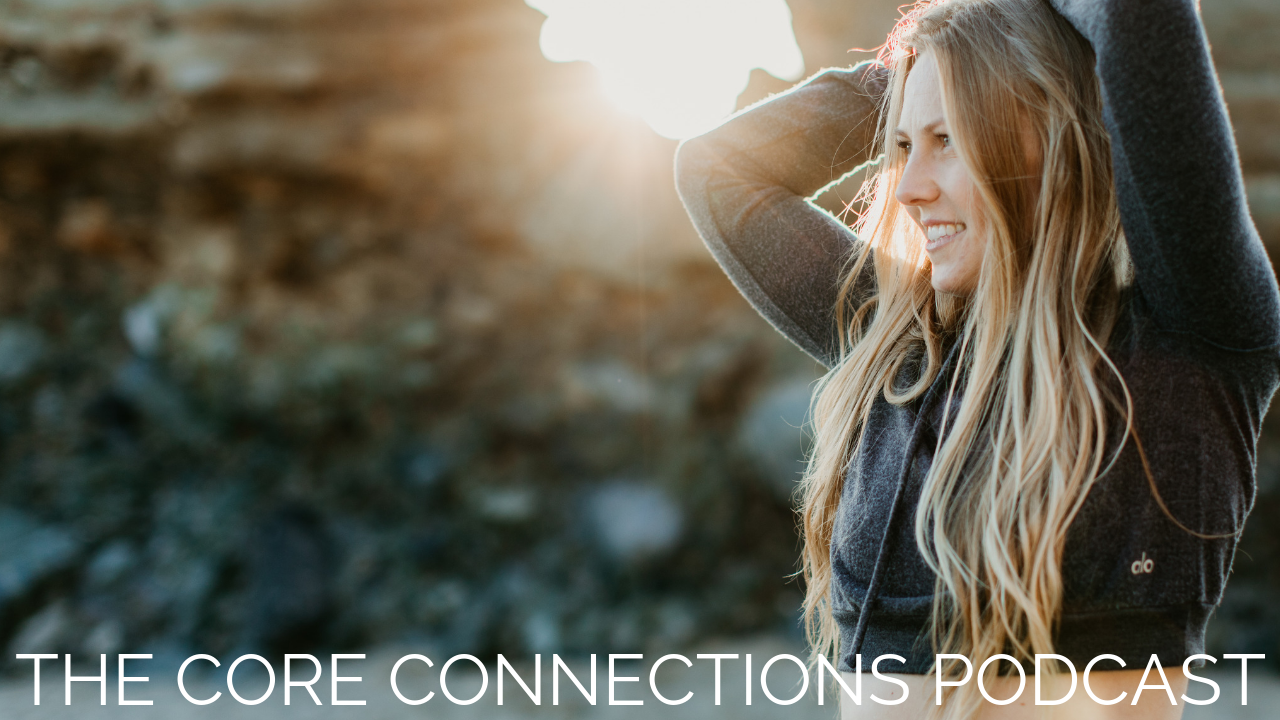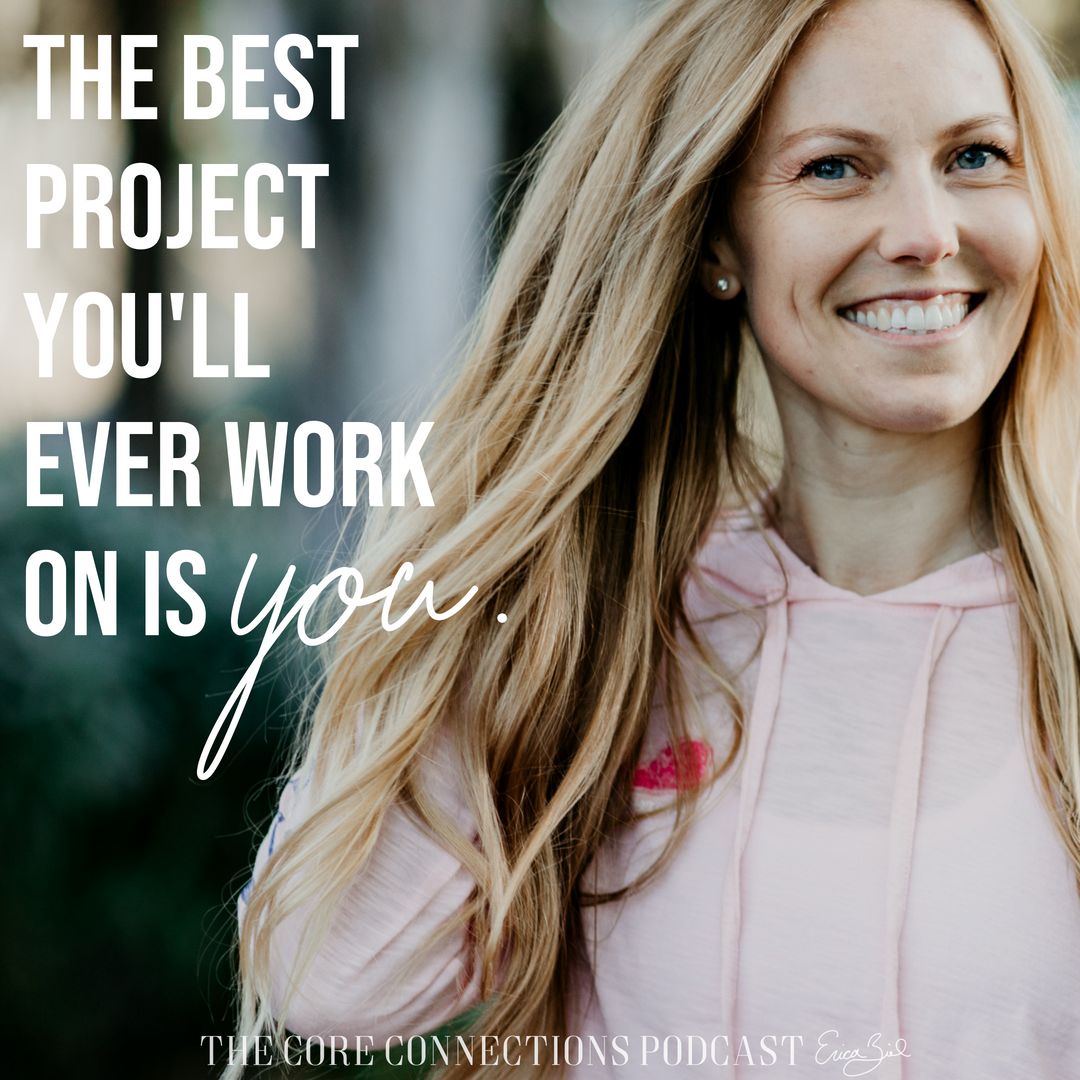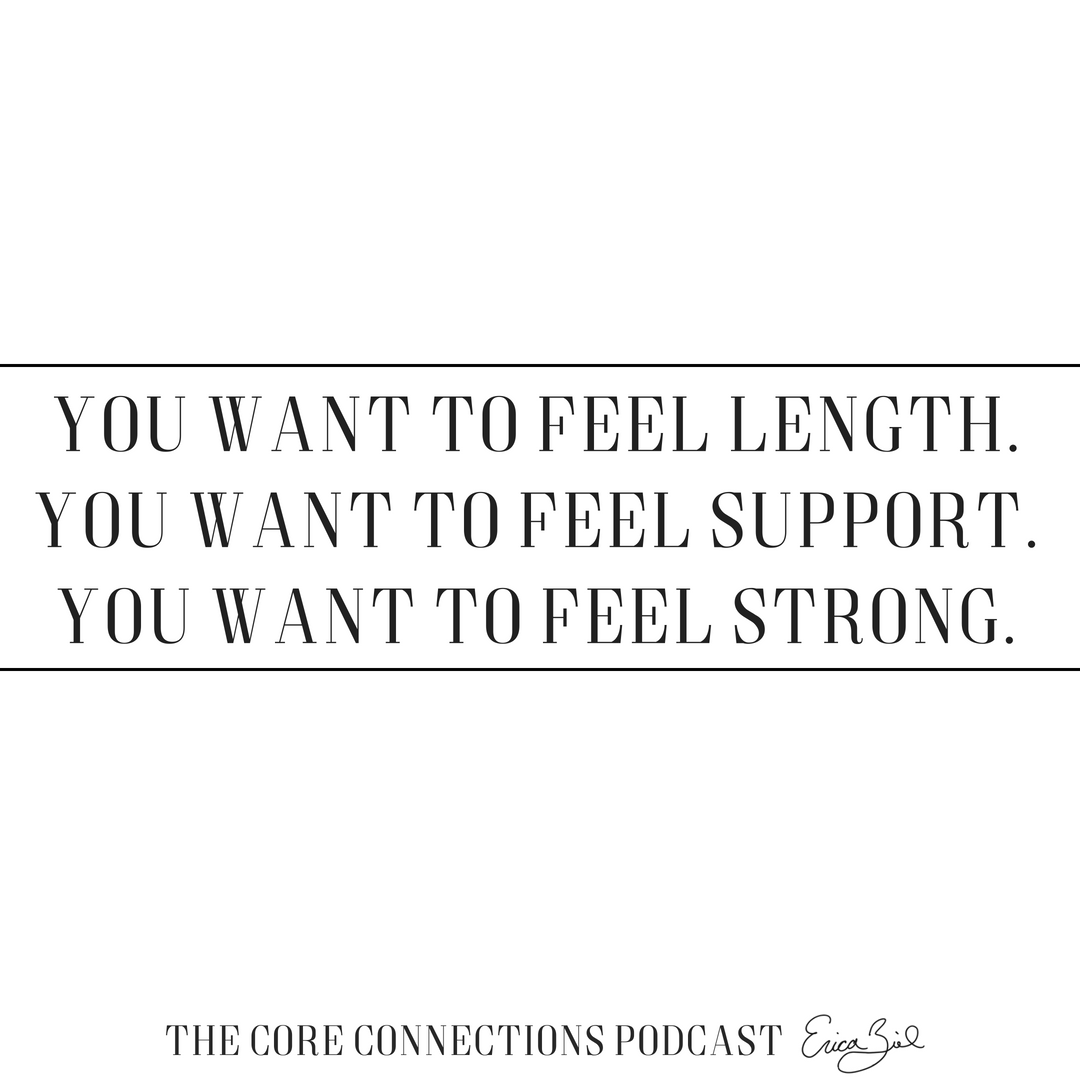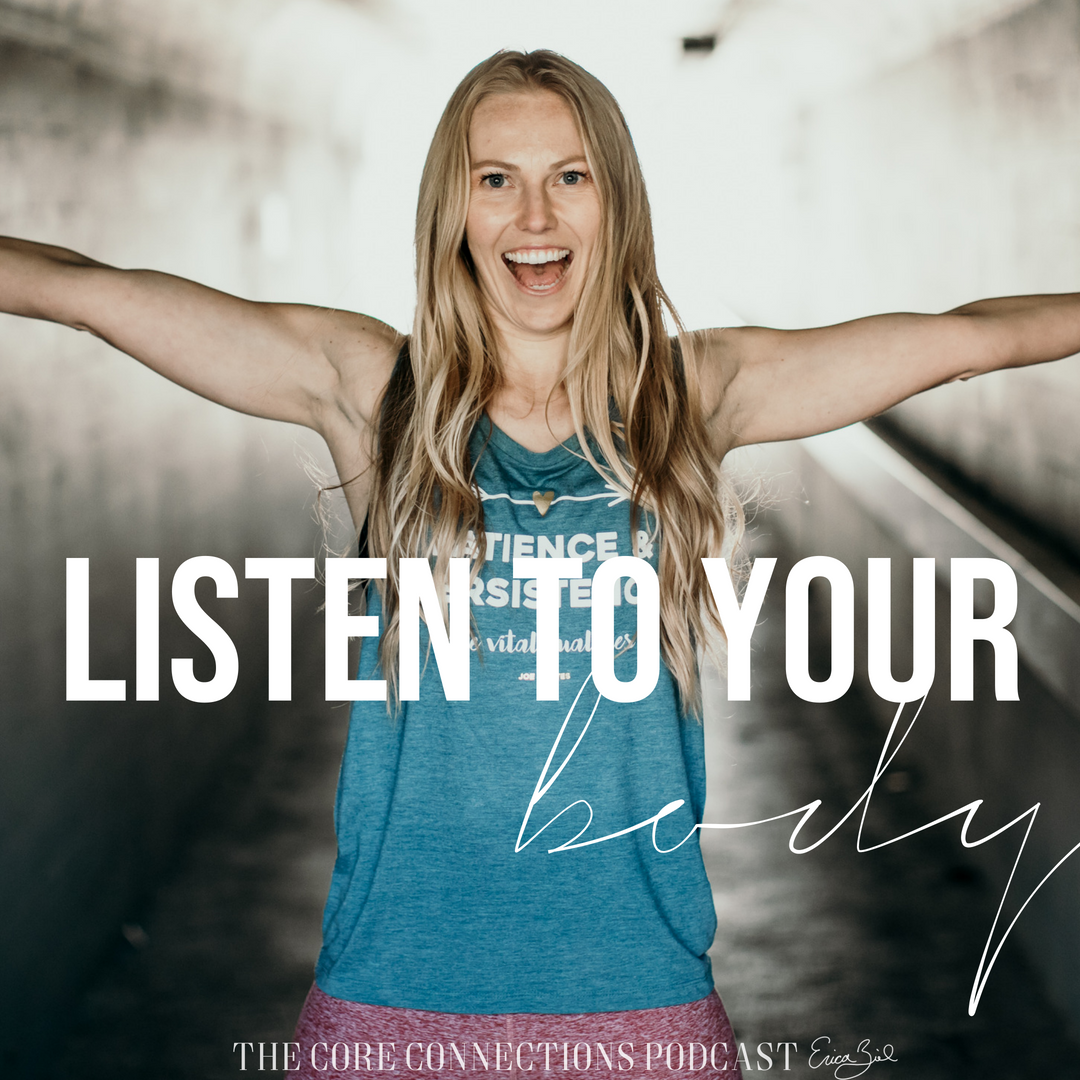Myths About Ab Training
May 15, 2018
Is it time for you to break up with your current ab training? It may just be, and you aren't the only one!! I had to go through this break up too as I was originally taught this way in my early years of teaching. BUT I challenge you to learn something NEW.
Just because it’s how everyone has always been taught doesn’t make it right – or the optimal way of strengthening and engaging your core.
After doing research, working with many clients, students, plus my personal experience – I quickly began seeing how drawing your belly towards your spine was affecting my clients as they were not effectively engaging their deep core and put unnecessary stress on their pelvic floor and can restrict your breathing. I found much better results when I encouraged my clients to lightly zip up from the base of their pelvis (yes this includes your pelvic floor).
If the entire deep core is not engaging effectively while lengthening then we encourage the shortening of fascia – completely the opposite of what we need to do. Listen to this episode or watch in the video below, as I take you through some myths that your abs need to hear.
EPISODE QUOTES



TRANSCRIPT
Erica: I have one big announcement before we get into this episode… that is that my Core Rehab Program is open! My team and I have decided to open it early and keep it open because of the overwhelming number of women that reach out to us ready to start rehabbing their core. We have added a whole new Core Nutrition Program that is included in your purchase of the Core Rehab Program. Movement and nutrition are the two key pieces of our health, so putting them both together is going to put your body up for lifelong success. Going back to the fundamentals of how you move your body and what you are putting in your body is important in creating a good foundation for you to progress from. Part of the foundation that Core Rehab was built on is how to activate your deep core more effectively, which is what we are going to dive in and talk through with this episode.
So, what is your core?? Our core runs from the base of your pelvis and all the way up to your shoulders. Your abs are integrated through your core to help you get up and down from the ground, but it goes deeper than that which is where our pelvic floor comes into play.
Everybody has a pelvic floor and it is important to address when we are talking about abdominal exercises. If you feel pressure on your pelvic floor, don’t feel it activating or experience incontinence (peeing your pants) those are all signs that whatever move you are doing is not an appropriate movement for your body at this time. Another aspect that I want you to start being aware when you are doing an abdominal movement is do you feel any pains throughout your body? Including low back pain, neck pain, tense shoulders and so on. That is your body giving you a sign that this is not the right exercise for your body right now.
Traditionally it has been taught to draw your belly to your spine when standing, sitting or doing any movement. But what is that doing to your posture, pelvic floor and breath?? It’s hard to breathe and move as you feel restricted throughout your core; it’s not good activation for your body. By putting your belly to your spine when doing abdominal exercises, you aren’t optimally working your core as you have no support in your spine.
As I talk you through the proper way to engage your core, remember that it is not always easy to pick up on these new habits and that it will take time to do so. To start, relax through your hips and shoulders, and I want you to breathe wide to your sides and into your back. As you exhale, lightly feel as though you are drawing your pelvic floor together and lengthening up all the way to the top of your head. Then as you exhale, lightly zip up even more to feel a slight wrapping of the ribs. Exhale and feel a light connection zipping up from the base of the pelvis, pelvic floor, pubic bone and all the way up. Lightly hold all of that on the underside of your pelvis, belly and then the lengthening through your spine.
As you continue to breathe out to your sides, you will feel this support that is important to be aware of when you are going for a run or training. When you have the support of the fascia and muscles, it is amazing how much better your body will start to feel right away. Once you start to learn these movements the correct way, it is there with you for life.
I want to talk about crunches because I am a vocal person about not doing crunches. If you are going to do them, I have a way that I want you to do them that I am going to talk you through. To get onto your back, I want you to zip up the belly and then roll onto your side and then to your back. This is a safer way to lie on the ground if you are dealing with any diastasis recti. When you do traditional crunches, you have your hands behind your head which makes you round and jam your back. When you are in this position you are jamming your back to the ground and drawing belly to spine. What do you feel in this position? Pain in your back, shortness of breath and stress in your neck.
To correct this, you want to put your back in a more neutral position. A good visual is to pretend you are balancing a glass of water on your pelvis, and then from there put your arms to your side to avoid stress in the neck. Think about inhaling wide into your sides and lightly zip up from the pelvic floor and feel a wrapping of your ribs. Wrapping of the ribs can be challenging, but it is something to work on because when we flex up the movement should come from your ribcage as the abs knit into the ribs. Tuck your chin lightly and then as we exhale, use your ribs to slide you up. Do this movement without moving your pelvis because you will feel a deeper connection through your lower abs.
If you feel any pain when doing this motion, it is a good indicator that your body is not ready for this exercise yet. I want to emphasize again that you need to keep a neutral pelvis when doing your crunches. Once you start to round and jam, you lose all connection through your deep core which puts pressure in all the wrong places and the exercise is not strengthening the right muscles.
In my Core Rehab Program, I don’t introduce flexion until the end of the program because there are more effective exercises for your abs and core. Crunches are an advanced exercise and there is so much fundamental work that needs to be done with your core to get where we need our bodies to be for optimal core function.
From here, I want to move into planking as it is another question that comes up a lot. You are going to take the same connections and breath work that you applied to your crunches into your planks. You can do planks on a wall, chair or the floor. Again, I believe that planks are an advanced exercise, so if you need to start on the wall know that that is okay. The modification doesn’t mean that it is easy, it means that it is more effective for your body.
I never teach static planks because I see no benefit to holding a movement as it stresses your back and shoulders. So, I am going to cue you through my plank slides. Move onto your forearms as you bring your legs back and lightly activate your glutes. Draw your pubic bone under ever so slightly. Avoid dipping into your back by reaching through your quads and pull up from that pubic bone. Feel the light activation of your pelvic floor then inhale to press your heels back and exhale slide forward. Through this motion, you are feeling the fascial lines going all the way through your body and not just working the muscles themselves. Our body needs to work together.
Next, we are going to talk about rotation and twisting movements as this can be super effective for your core if you do them correctly. You want to watch that you are not twisting from the deep lumbar spine. If you are not moving your hips, the rotation needs to be small, and it needs to come from the ribs and your thoracic. Lifting and rotating to create space through the front of your hips as you lead from your toe, through your hip and ribs as you reach. This will allow you to get into the deep fascial layers that are going around your ribs. Twisting deeper doesn’t mean that they are better for your body or that you are getting more out of the movement, it could be worse. We don’t want to force our fascia to open up, we want to encourage it to lengthen.
When I teach rotation, I like to implement full-body rotation to reach more fascial lines. Once we realize that our hips need to move with you as the rotation comes through your ribs, there will be greater opposition in your body creating better connections. Rotation helps realign our bodies as it is also good for your nervous system and lymphatic system.
I want to wrap up today’s conversation by addressing ab vacuuming. I’m going to talk you through how I have seen people teaching it and then the way that you can modify this movement to make it effective. The way that I am seeing ab vacuuming being taught is with the belly to spine bringing us back to the beginning of our conversation today. Do the movement incorrectly first so you can feel the difference in the connections; take a deep breath and then as you exhale draw your belly to your spine causing you to round forward and flare your ribs. Then you hold your breath and you twist, and I have no idea what this is doing for your body.
Let’s go through this again in a way that is more optimal for your core to move. Inhale wide into your sides as you lightly zip up and put your hands on your ribs to start to feel the breath wrapping around the ribs. Then as you lift and rotate with a slight twist in your hips, you are activating your deep core in a solid position feeling a nice, diagonal pull. Working through ab vacuuming in this way allows you to work on your fascial lines rather than being rounded forward and sucked-in in a not optimal way.
You want to feel length. You want to feel support. You want to feel strong. Connect with your body and listen to what it is telling you.
The material contained within is provided for educational and informational purposes only and is not intended as medical advice. You should seek prompt medical care for any specific health issues and consult your physician before beginning a new regiment or purchasing any product(s).

















